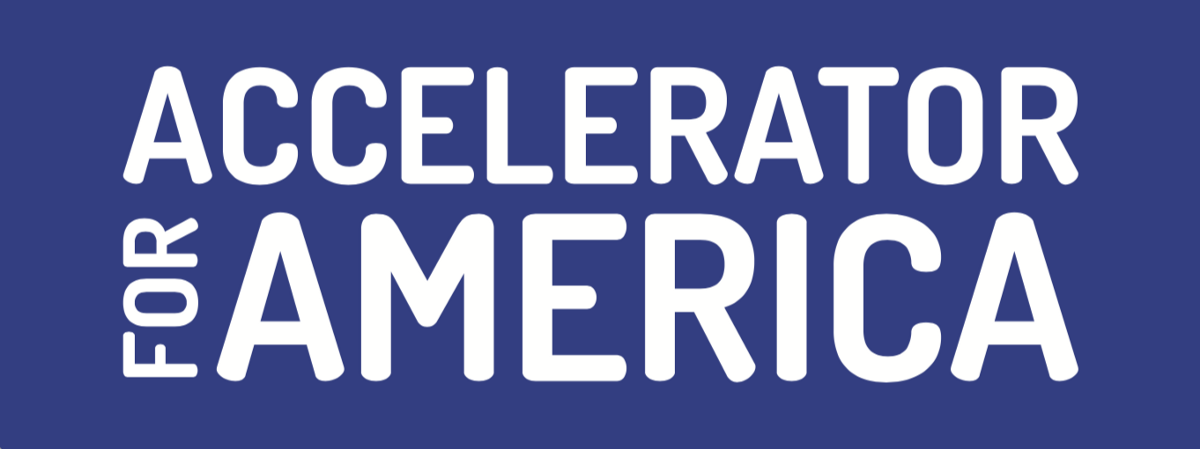From Recovery to Revitalization: How Local Leaders are unlocking the potential of the American Rescue Plan
Accelerator’s latest report, “From Recovery to Revitalization: How local leaders are unlocking the potential of the American Rescue Plan,” co-written with the Brookings Institution through a partnership with the National Association of Counties (NACo), takes a look at how localities have been able to use the direct relief funds they received under the American Rescue Plan (ARPA) to promote innovative and inclusive recovery initiatives. This report was based on in-depth analysis and interviews with local decision-makers in 17 cities and counties on how they are using State and Local Fiscal Recovery Funds (SLFRF) from ARPA to promote inclusive recovery across a variety of domains, including economic and community development, workforce, housing, and place-based initiatives, among many others.
St. Louis Mayor Tishuara Jones and the St. Louis Development Corporation's (SLDC) Economic Justice Action Plan will transform neighborhoods like this one in North Broadway.
This report also includes recommendations for both local leaders and federal officials to ensure these programs remain high performing and sustainable even after the relief funds are expended. With SLFRF obligation (December 31, 2024) and expenditure (December 31, 2026) deadlines quickly approaching, the time is now for local officials to be engaged in long-term planning for important initiatives funded through ARPA. While ARPA investments so far have the potential to transform and revitalize neighborhoods, local leaders and federal officials must take decisive action to ensure that the momentum from these projects continues once SLFRF funds are exhausted.
Birmingham Mayor Randall Woodfin speaks at the opening of the Birmingham Xpress in September 2022.
Innovative SLFRF-funded initiatives profiled in this report include:
St. Louis, MO’s investment in its Economic Justice Action Plan, an ambitious and cross-cutting strategy for promoting economic recovery. The city is investing nearly $250 million of its SLFRF in the Action Plan across five major goals: strengthening neighborhoods, closing the wealth gap, improving health and educational outcomes, expanding the tax base, and growing the city’s population.
Kansas City, MO invested $25 million in SLFRF into its Affordable Housing Trust Fund, which directly funded hundreds of affordable units and paved the way for a successful bond reauthorization campaign (approved by 71% of voters) on the November 2022 ballot that secured an additional $50 million.
Phoenix, AZ committed $18.5 million in SLFRF to buy an abandoned Kmart in a distressed neighborhood and convert it into a large workforce center that local educational and job training institutions will operate.
Dayton, OH is using $7 million in SLFRF to activate small, street-level businesses across the city’s commercial districts. This “first floor” fund is helping startups and existing businesses by providing a combination of primary and forgivable loans to qualifying borrowers, many of whom are minority- and/or women-owned firms that face obstacles to obtaining capital from traditional lending sources.
Louisville, KY committed $40 million in SLFRF to support the Healthcare Innovation Workforce Coalition, which is composed of local health care organizations, nonprofits, and intermediaries working to make the city a hub for health care innovation. The commitment includes a pledge to create and fill 1,500 entry-level healthcare jobs and the development of a new technology and learning center in the Russell neighborhood, the historic heart of Black Louisville.
Birmingham, AL has invested more than $7.5 million in SLFRF into completing its Birmingham Xpress bus rapid transit line. This new line will connect 25 neighborhoods across the city and its outlying communities to jobs, health care, education, and other vital needs.
Recommendations and considerations for local leaders include:
Embed new programs in strategic community initiatives and create structures that leverage civic leadership and other local partners to ensure ongoing support past ARPA and elected officials’ terms of office
Leverage the private sector, philanthropy, and/or additional federal and state funds to create sustained support for APRA-catalyzed investments
Prioritize cross-jurisdictional coordination and collaborative civic processes to maximize local and regional impact going forward
Consider permanently integrating new impact measurement tools into local government and agency operations to monitor and extend successful ARPA-funded programs and enhance localities’ overall ability to measure programmatic performance
This report also includes a number of recommendations for federal officials to help localities ensure the long-term impact and sustainability of their ARPA-funded programs with a focus on amplifying the flexibility of federal funds in the short and long term and encouraging program managers to think differently about fostering and funding the regional collaboration necessary to support transformative initiatives in community, workforce, and economic development.
We encourage you to read “From Recovery to Revitalization: How Local Leaders are Unlocking the Potential of the American Rescue Plan” in full and to get in touch with us with your feedback, or for any assistance you may need. AFA looks forward to working with you to maximize the impact of these funds now and for years to come. Let’s make the most of this moment – and make it last.
Mary Ellen Wiederwohl
President & CEO
Accelerator for America


